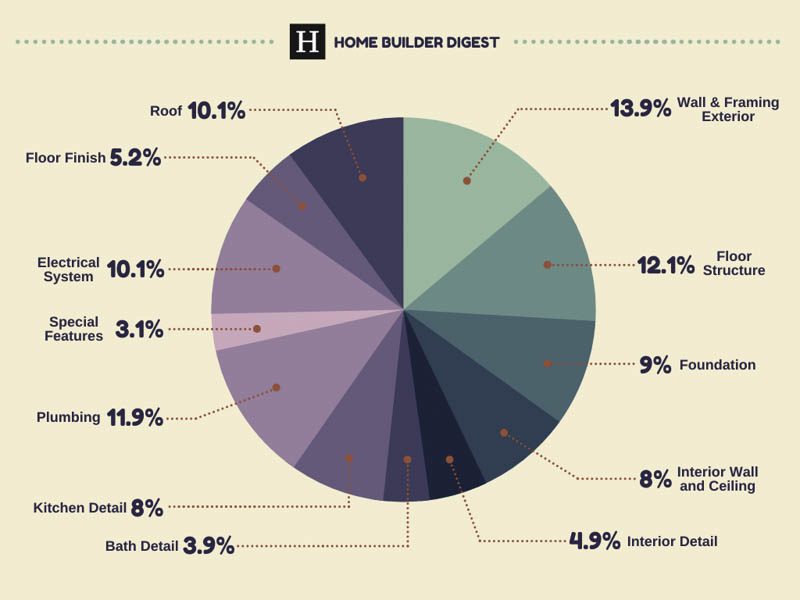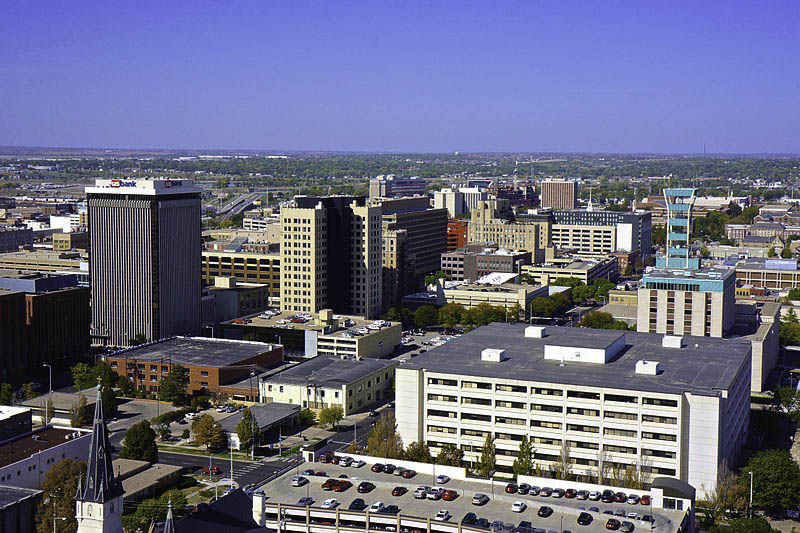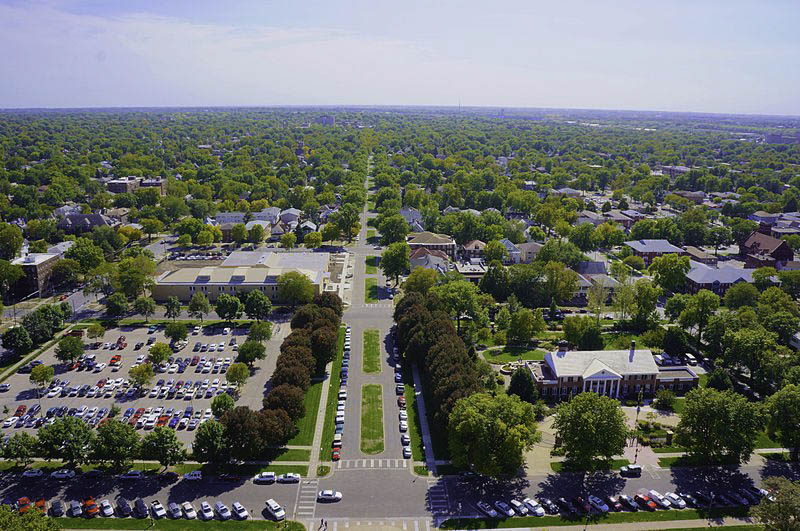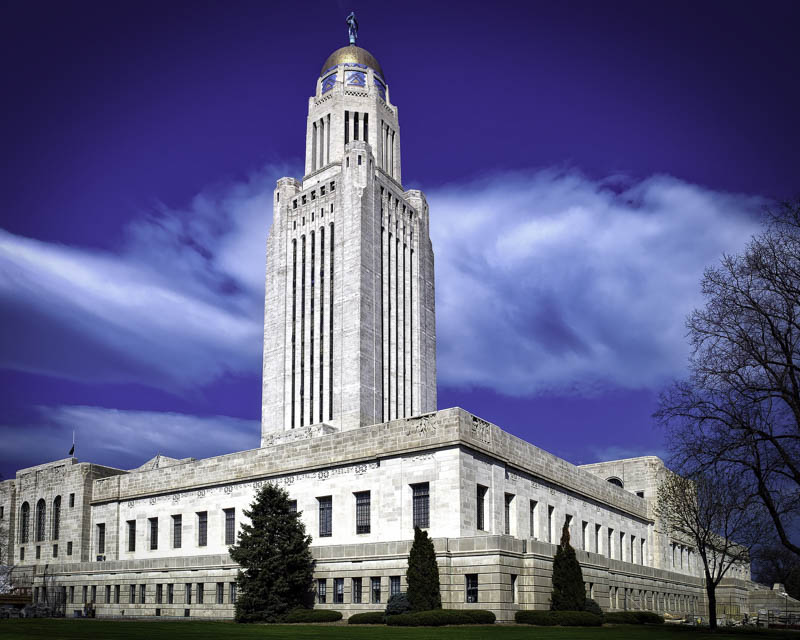Home » Cost Guides » Nebraska Cost Guides » How Much Does it Cost to Build a House in Lincoln?
Named after the 16th U.S. President, Lincoln serves as the capital of Nebraska and the second-most populous city in the state. Niche ranks the city as the 27th Best City to Raise a Family in America and the 33rd Best Cities to Live in America. Additionally, the site ranked Lincoln as the 10th Best Cities to Buy a House in America, along with WalletHub’s ranking as the 3rd Best Place for First-Time Home Buyers. This attracted numerous growing families, resulting in a 13% population growth in the past decade. Today, Lincoln is home to almost 300,000 residents, most of whom are working professionals that excel in education, service, manufacturing, pharmaceutical, and many more.
The Cost of Building a Home in Lincoln

Since the global pandemic began, residents have been putting their home needs as a priority. They are focused on utilizing their spaces and adjusting it according to their lifestyle. One guaranteed way to do this is through custom home building. From the word itself, homeowners can customize their homes in any way they like. They are also in control of the budget as they can splurge on the things they need and want while being practical in other home aspects.
According to the National Association of Home Builders (NAHB), building a home in the US typically costs $485,000. This value is within the price range given by the online contractor platform BuildZoom (BZ). The site reports that recently built homes in the country cost $138 to $320 per square foot — about $345,000 to $800,000 for a 2,500-square-foot home.
Homebuilding costs in Lincoln have an estimated range of $95 to $480 per square foot — roughly $240,000 to $1,200,000 for a 2,500-square-foot home. The value depends on numerous factors, including size, complexity, materials, and finishes. Opting for a value-conscious home will cost $95 to $144 per square foot. On the other hand, a luxurious home may cost $201 to $480 per square foot.
As a disclaimer, these values are only estimates and are not the final answer to how much it costs to build a home in Lincoln. The total value will depend on numerous factors besides those mentioned above. These factors are divided into two separate categories: hard and soft costs.
Hard Costs
Hard costs pertain to the factors involved in the physical building of the home. This includes the construction costs, materials, labor, and landscaping. Extra amenities or home additions are also included in this category, alongside HVAC, electrical, and plumbing systems.
The Basic home construction in Lincoln has a median cost of $110 per square foot. It may go as low as $90 per square foot or as much as $200 per square foot — approximately $225,000 to $500,000 for a 2,500-square foot home. However, these costs only consider the finished livable spaces. Adding extra amenities and using better materials will increase the total building cost, along with the home’s intricate design and site complexity.
The value breakdown according to job or task is as follows:
- Site Work: $10 to $100 per square foot
- Foundation: $4,000 to $30,000
- Framing: $20,000 to $50,000
- Finishing: $90 to $1,000 per square foot
- HVAC: $1,500 to $12,500
Exterior Finishing:
- Roof: $3,200 to $9,000
- Doors: $1,200 to $3,200
- Windows: $5,000 to $10,000
Interior Finishing:
- Tile: $800 to $5,000
- Flooring: $1,500 to $14,000
- Appliances: $3,500 to $15,000
- Plumbing Fixtures: $150 to $350 each
- Kitchen Cabinets: $3,200 to $8,500
- Insulation: $1,000 to $2,500
- Fireplace: $1,400 to $2,500
Material and labor fees greatly contribute to the overall construction costs as they are about 50% and 30 to 60% of the building budget, respectively. These expenses have also significantly increased since the pandemic and still remain volatile until issues in the industry are resolved. Experts suggest setting aside a 10% contingency budget to shoulder any sudden increase in costs.
Listed below are the average fees for materials and labor services:
Materials:
- Concrete: $1,000 to $10,000
- Lumber: $25,000 to $65,000
- Drywall: $10 per sheet
- Vinyl Siding: $2 to $5 per square foot
- Stone Siding: $35 to $50 per square foot
Labor:
- Framer: $7 to $16 per square foot
- Construction Manager: $3,000 to $50,000
- Roofer: $5,000 to $10,000
- Electrician: $50 to $100 per hour
- Plumber: $45 to $200 per hour

Figure 1. Typical cost breakdown of a single-family home constructed using the conventional method, according to Home Builder Digest. Image Source: National Cost Guide.
Soft Costs
Soft costs refer to the fees that go beyond the actual building of the physical home. Usually, these expenses are planned and settled before the construction begins. This category includes fees associated with land acquisition and development, authorizations from the local government, and the overall appearance and layout of the home.

Figure 2. Soft cost percentage and average price range of additional fees, determined from the overall cost of custom home building in Lincoln.
Cost of the Land
According to real estate marketplace Zillow, the current residential land available in Lincoln has a median price of $104,000 or $18 per square foot. The cheapest listing is located at the Dominion at Stevens Creek and costs $95,000 for an 11,761-square-foot land — about $8 per square foot. On the other hand, the most expensive listing costs $135,000 for a 6,512-square-foot land — approximately $21 per square foot. It is a daylight, corner lot located Southeast of Lincoln with expansive views of the nearby golf course.
The minimum lot size required for single family homes in the city is 6,000 square feet, with two parking spaces allotted per dwelling unit. Following this regulation, residential land acquisition in Lincoln will cost roughly $50,000 to $130,000. The NAHB’s reported average cost of residential land is within this range, with an estimated price of $85,000.
Permits and Other Fees
Building permits in Nebraska can be applied through the city government’s website. To ensure permit approval, a site plan that shows the location and scope of construction must be submitted to the examiners. The plan should also include the cost value of the project — building, mechanical, electrical, plumbing, excavating, grading, construction labor, and other costs. The architectural fees, land costs, and landscaping fees can be excluded. If a contractor is applying for a building permit on behalf of the owner, the city government provides a checklist for them. Every application must have the following:
- Energy Code Certification
- Curb Cut Permit
- Impact Determination Form
- Water Supply Form
- Sewer Tap Permit
- Floodplain Permit (if the property is within a floodplain area)
Building permit fees in the city are usually calculated based on the project’s square footage. There is a $35 minimum fee for this and a $40 minimum fee for plan review. The total fees to be settled will only be disclosed to project owners and contractors upon submission of site plans.
According to BuildZoom (BZ), recently built single family homes in Lincoln paid an average of $515 for the building permits. Some homeowners paid as low as $370, and some paid as high as $720.
Architecture and Design Fees
Architects and designers work collaboratively with homeowners and help them envision their dream home. They create a detailed plan and an effective strategy while keeping the home within city building regulations. Each architect and designer charge differently, using various ways to price it. The two most commonly used methods are through a percentage of the total method and on an hourly basis.
The percentage rate is usually used by architectural firms. Their typical service charge for new single home construction is around 9 to 10% of the project’s construction costs. Keep in mind there may be instances that this rate will increase or decrease depending on the complexity and details of the project. Assuming that the basic construction fee for a 2,500-square-foot home costs $275,000, the total architecture fee will land at about $25,000 to $27,500. This fee represents a particular scope of work based on the agreed-upon arrangement between the client and the architect. Any task beyond that will be charged differently — usually on an hourly basis — and is added to the total design fees.
How do Lincoln’s custom home building costs compare to other nearby cities?

Homebuilding costs in the midwest are on the cheaper end when compared to the West and Northeast. The average price is $130 per square foot — about 20% and 23% more affordable than the mentioned regions.
When Nebraska is compared to other states in the midwest, the state is within the mid-range. As per Business Insider, it ranks 6th out of 10 with homes priced at $140 per square foot — 34% cheaper than the most expensive state Minnesota, and 23% more expensive than the cheapest state Indiana.
In terms of major cities in Nebraska, building construction costs in Lincoln are not that far from the other major cities. The largest city in the state, Omaha, is the cheapest city to build with home construction costing $87 to $130 per square foot. The cities of Hastings and Lexington are slightly higher but relatively the same, with home construction costing $92 to $137 per square foot and $92 to $136 per square foot, respectively.
What Leading Custom Home Builders and Architects that Serve the Lincoln Area Say

Having built a few times at Lincoln, Steve Taft, president of luxury home building firm ADC Custom Homes shared some insights. He explained that the same houses built in 2020 cost 30% more today; some builders even reported a 45% increase. Taft anticipates that the currently high construction costs are yet to come down. As the summer approaches, gas prices will rise, which will most likely worsen the already expensive building fees, he added.
The Future of Lincoln’s Residential Construction Industry
As mentioned earlier, homeowners are now prioritizing upgrading their homes ever since the pandemic began. They are focused on improving their spaces and adjusting it according to their new-normal lifestyle. Some of them have realized that they have already outgrown their homes or need a change of environment, thus deciding to relocate, buy, or build new homes. This resulted in a strong demand that the real estate and construction industry is unable to control. Increasing home values and construction costs have been the trend since 2020. Yet, buyers and soon-to-be homeowners are still unwavering.
According to Zillow’s Home Value Index, single family homes in Lincoln have increased by 25% since 2020 — currently priced at $272,000. The trend continues as the median sale price of existing homes increased by 13.5% since 2020 — now cost $70,000 more than it was five years ago, as per Great Plains Regional Multiple Listing Service. Although newly constructed homes did not increase as much, prices still inflated up to 9.5%. These price inflations were also brought by the historically-low home inventories as bidding wars among potential buyers have been the norm. In fact, clients have paid an average of 2% above the asking price in the previous year.
Lack of labor workforce and supply issues also buoyed the increase in home prices. The U.S. Census Bureau reported that construction spending has increased by 1.3% between February and November 2020. Ken Simonson, the chief economist of Associated General Contractors of America, added that all materials and services used in new construction have significantly increased in a span of eight months — more than 8% increase from April to December 2020. Among the materials that remarkably surged were steel products, copper, diesel, and lumber. Simonson predicts that these sudden price influx will likely worsen until issues are resolved.

Fortunately, experts from the Bureau of Business Research of the University of Nebraska-Lincoln and the Nebraska Business Forecast Council predict that the state will continue to recover from the pandemic. They anticipate that Nebraska’s economy will recoup economic losses, thus rising employment levels. Experts are also expecting the construction industry to add 1,000 jobs, thus greatly helping the lack of workforce and strong home construction demands. Additionally, there is a steady decline in population in various cities which means “there will be a slower demand growth for most types of construction, including housing,” as per Simonson.
Considering building a home in Lincoln?
Contact us for a free consultation
